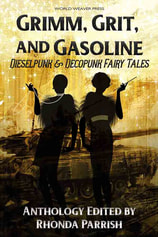 Guest Blog by Alicia K. Anderson The call for stories for the Grimm, Grit, and Gasoline anthology appeared at the same time as the quarter’s syllabus for Folk and Fairy Tale Traditions class. I’m pursuing a degree in Mythological Studies at Pacifica Graduate Institute, which is nearly as fantastical a sentence to write as a fairy tale retelling might be. I hadn’t wanted to write Rapunzel, but I saw the image of her standing on a factory floor with her hair in a tight golden bun. I could see the love interest in my mind’s eye tell her that she needed to let her hair down. This was the first hint I had of the story that would become ‘Ramps and Rocket’. Maiden in the ToweR I wanted to make my Rapunzel story a proper Rapunzel story. I used various versions of the tale — including Basile’s Petrosinella and de la Force’s Persinette -- which Jack Zipes credits as the primary inspiration for related tales from Bierling, Bechstein, and the Grimms. I also looked at the Aarne-Thompson-Uther folk tale index, and the descriptions of the pieces required for tale type 310. “The Maiden in the Tower” — a subset of the “Magical Adversaries” category. These are the basic components of the story:
Aside from setting and narrative frame, I left the initial transgression largely intact. The father in the story steals the rampion, and Gothel takes her payment in kind — a baby named Rampion. Rapunzel is named after the German word for rampion, a European vegetable used in salads), and her name is the clue for understanding what happens. [….] [T]he sorceress gains the care of Rapunzel because her parents had, first transgressed into her forbidden domain and, second, agreed to hand Rapunzel over. So the sorceress wanted Rapunzel more than her parents did, or so it seems. (Bettelheim 148) Dieselpunk Details  The change in era and aesthetic made it necessary to adjust the tower in which Rampion is imprisoned. She lives in, and is the beloved foreman of a tall, smoky factory that makes the bits and knobs used on dashboards of automobiles and airplanes. The tall factory tower still separates Rampion from reality. She is kept apart from her coworkers by Gothel and by her position in charge. The factory itself was born of the dieselpunk theme of the anthology. The story needed to smell of exhaust fumes and leather belts, of fires and boilers and early versions of internal combustion engines. It needed to be dirty and productive, full of life amidst giant machines. I needed to invent some new machine to cement my story in this aesthetic of time and place. It’s All About the Hair The style of Rampion’s blonde hair is also adjusted for era and aesthetic purposes. Though I updated the quantity and styling of Rampion’s hair, I didn’t change its color. In her essay “The Language of Hair” in From the Beast to the Blonde, Marina Warner brought to light the fact that “Blondness and beauty have provided a conceptual rhyme in visual and literary imagery ever since the goddess of Love’s tresses were described as xanthe, golden, by Homer” (363). Fairness was a guarantee of quality. It was the imaginary opposite of ‘foul,’ it connoted all that was pure, good, clean. Blondeness is less a descriptive term about hair pigmentation than a blazon in code, a piece of a value system that it is urgent to confront and analyse because its implications, in moral and social terms, are so dire and are still so unthinkingly embedded in the most ordinary, popular materials of the imagination. (Warner 364) The concept of Rampion “letting down” her hair as a passport to her feelings, emotional release and possibly sex was not lost. Though the story never speaks of her isolation from the outside world or the world of sexual maturity, her blondeness implies it. “All though blondeness’s most enduring associations are with beauty, with love and nubility, with erotic attraction, with value and fertility,” writes Warner, “its luminosity made it also the traditional colour of virgins” (367). Gothel cuts Rampion’s long banner of golden hair as a punishment for her indiscretion. “Maidenhair can symbolize maidenhead – and its loss too, and the flux of sexual energy that this releases [….]” (Warner 374). Developing Rocket In Rapunzel, the element that fills me with envy and desire is the character of the Prince. Until he is blinded by the witch, he comes and goes as he pleases. He has a horse. He has access to enter and exit the tower. His movement and freedom inspired me to invent Rocket’s wheelchair that was also a motorcycle. Rocket is unlimited in where she can go, and at what speed. She can wheel indoors, or she can take off along the highway at the end of the day. The name “Rocket” is chosen for the dual meaning. First is the object that blasts off into space — how she might blast off down the road on her motorbike. The second meaning of “rocket” is the British slang for the green that in the US is called arugula. Rampion and Rocket are both expensive salad greens. They are both women. It was important to me on an emotional and intuitive level that the characters were more alike than they were different. Healing Emotions via the Body When I write, my creative process includes tapping into the parts of myself and my own unconscious that are activated by the story I’m retelling. I have been working on my relationship to my chronic illness and my own identity as a disabled person. Rocket’s disability as a function of her freedom is absolutely something that touches upon my experience. The inability of my body to move freely forced me to become more emotionally vulnerable and “free”. In his introduction to The Uses of Enchantment, Bruno Bettelheim writes of a young boy who found Rapunzel comforting. “Rapunzel found the means of escaping her predicament in her own body — the tresses on which the prince climbed up to her room in the tower. That one’s body can provide a lifeline reassured him that, if necessary, he would similarly find in his own body the source of his security” (Bettelheim 17). I had not read Bettelheim’s analysis of the story until after I’d written my retelling, and I’m very glad for it. He would have spoiled the ending! "The fantastic element is that which provides that final consolation: the power of the body is imaginatively exaggerated by the overlong tresses, on which one can climb up a tower, and by tears, which can restore sight. But what more reliable source of recovery do we have than our own body?" (Bettelheim 149) wORKS cITEDBettelheim, Bruno. The Uses of Enchantment: The Meaning and Importance of Fairy Tales. New York: Knopf, 1977. Print. Warner, Marina. From the Beast to the Blonde: On Fairy Tales and Their Tellers. New York: Noonday, 1994, Print About the AuthorOn nights and weekends, Alicia K. Anderson squeezes creative writing between the assignments for a Ph.D. program in Mythological Studies. During the weekdays, she is a freelance SEO consultant — which is a form of wizardry in its own right. Sometimes she wishes she were locked in a tower with only occasional headaches from visiting loved ones. Alas, her husband and stepson don’t have to ask her to let her hair down to gain entry to her lair. At best, they sometimes knock. Find her online at aliciakinganderson.com
2 Comments
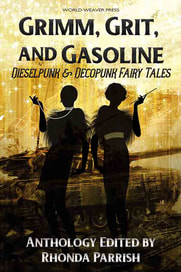 Guest Blog by Jack Bates I reached a personal milestone with the inclusion of ‘Bonne Chance Confidential’ in Grimm, Grit, and Gasoline. The mash up of Gatsby, Cinderella, and Poe marked the thirtieth time I had a story appear in a print anthology. If I include ebook anthos, I’m probably closer to forty. Sometimes I marvel at the names of authors I’ve appeared with in print. Three times I’ve appeared with Lawrence Block. In one Foreword, Ken Bruen said I wrote ‘a pip of a story’. In 2018, I had a story appear in FLORIDA HAPPENS, the official anthology for Bouchercon in St. Pete. Not too shabby for a guy who ‘got serious’ about writing back in 1980 after he picked up his first rejection letter from a popular, late night, sketch comedy show. Undeterred, I kept writing. I have at least one copy of each anthology I’ve appeared in on a shelf in my office, a tiny room with yellow walls and pink carpet from when it was my daughters’ playroom. My office used to be upstairs in the loft but one of my now teenage daughters has deemed the adjacent space we used for a library as her new bedroom so I moved downstairs. Didn’t matter where I was. I kept writing. 1980 to 1987 were college years. A campus literary magazine ran a semi-autobiographical short story I sent it because—in my opinion—the story filled the last page. 1988 to 1998 were new career in education years, first marriage years, personal hardship years, creative growth and change years. And through it all, I kept writing. 2000 to now saw remarkable success in a variety of creative outlets. I optioned a screenplay. I had a short-lived web series. I had a YA horror novel published along with a Middle Grade steampunk novel and a holiday picture book. I wrote a series of P.I. novellas and a four part western series. I had many more rejections but still I kept writing. I realized appearing in my thirtieth anthology that I’ve never NOT been writing. (Yes, double negative but this is a blog and I like how it sounds.) From ‘The Tales of Running Deer’ that I wrote in First Grade to ‘Bonne Chance Confidential’ in Grimm, Grit, and Gasoline, I’ve either had pen in hand or fingers on the keyboard or I was thinking about a work in progress or dreaming up a new one. If there’s one thing to remember about being in an anthology for the thirtieth time, it’s this: I’m still writing because being in thirty-one would be even cooler. About the AuthorJack Bates is a three-time finalist for a Derringer Award from the Short Mystery Fiction Society. In 2007 he co-wrote WHITE OUT, a horror screenplay that had its option picked up twice by Triboro Films in New York. His stories have appeared at crime sites such as Near to the Knuckle, Shotgun Honey, Beat to a Pulp and many others. He has also appeared twice before in Mystery Weekly. Most recently his short, ‘The Fakahatchee Goonch’ was included in the Bouchercon 2018 anthology, FLORIDA HAPPENS.
Drawing on his experience as an educator, Bates sets his Cinderella based story in the Hudson Bay region of New York. The homage to F. Scott Fitzgerald’s The Great Gatsby is not accidental. After deconstructing both stories, certain tropes and themes align. Re-inventing self is major component of each story. Both characters yearn to be free of their poverty level lives. One takes matters into his own hands while the other has a chance encounter. Either way, fate has a way of putting a twist on the final outcome. 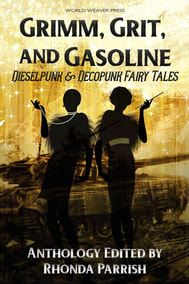 Guest Blog by Sarah Van Goethem I’ve spent some time recently ruminating about my love of dark fairytales, and why I’ve returned to them in my adult life, and it occurs to me that perhaps I didn’t get enough ‘darkness’ as a child. Yes, you read that correctly. It’s possible I didn’t get enough ‘darkness.’ Now, wait, before you decide I’ve lost it, and run off to helicopter parent little Johnny and Susie, and protect them from what I’m about to say, hear me out. It’s possible that those horrifying fairytales, about getting eaten by wolves, or abandoned in a forest, serve a real purpose. Allow me to set the scene and give you a glimpse of my own childhood: I grew up on a farm, with two loving parents, a sister, and a set of grandparents who lived just down the gravel road. I spent my days traipsing through woodlands with my beagle, pretending I was a fairy or a wood nymph or a tree spirit. I made wishes on dandelion fluff and danced in meadows. My forest was a place of wonder and magic and I wore rose-colored glasses. Nothing bad happened, at least not anything life shattering. It was an idyllic childhood, yes, and I wouldn’t trade a moment of it. But it didn’t prepare me for the fact that bad things do happen, that change is inevitable—and that I was not immune to it. It wasn’t until I was an adult that my life took an abrupt turn. I lost my husband to cancer at a young age and became a single mom. This was nothing I had ever envisioned in my picturesque life and it took me a long time to recover and accept that things would never be as they were before. That I would never be the same again. 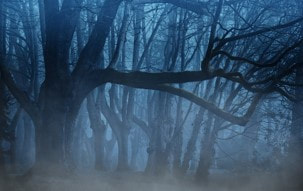 One of my favorite authors, Neil Gaiman, has been quoted as saying, "If you are protected from dark things, then you have no protection of, or knowledge of, or understanding of dark things when they show up." Indeed, this was me. I’d been naïve and I was left floundering, forced to search deep inside myself for skills I’d never had before. Skills I’d never needed until that moment. There is something wholly unnerving about being tossed into the shadows when you’ve only ever been in the light. Ironically, my own children are forced to live with a darkness that I spend every day wishing I could take away, a childhood very different than my own. A thing I had no power to protect them from. But what I learned is this: There is power in fairytales, power to bring us through the darkness to the other side. Fairytales can be therapeutic, a place where the mind can wander into a fictional forest and encounter danger through a lens, rather than firsthand. Perhaps it’s not a bad thing to let little Johnny and Susie read a dark fairytale, particularly in a safe zone, a place where they can venture into the deep, dark woods and learn how to cope. Maybe it’s not a bad thing for adults to read them either. 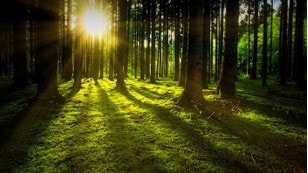 A return to fairytales told me I was not alone. Generations before me had borne hardships and the only way to the other side, was directly through that fictional dark forest. And that’s what I did. I dragged my children with me, through undergrowth and ragged vines and thorns that have left scars, and I like to think I got them to the other side of those dark days. They are inevitably changed, but also far stronger than I was at their ages. As for me, there is something healing for me in retelling fairytales, something akin to recovery. It has brought me full circle, back from the darkness and into the forest I once knew, the forest of awe and delight. I only hope my children find their way back there always, when the hard times fall and especially if I’m not around to hold their hands. Perhaps this is why fairytales endure. They are infinitely malleable, able to change and modify to suit our needs, both personally, and as a society. Perhaps their staying power lies in the fact that they are a guide in life and we can draw from them what we need, when we need it. We will all experience the good, and none of us are exempt from the bad. But we can all find strength in the dark, just like our fairytale heroes. A dark fairytale is perhaps a warning, but also a reassurance—we may all have to venture into that dark woodland at some point. About the AuthorSarah Van Goethem is a Canadian Author who resides in Southwestern Ontario. She spent lazy childhood summers on the farm, reading on the old tire swing beneath the maple tree, believing in fairytales. She’s a nature lover, a wanderer of the fields & forests, and gatherer of vintage. Inspired by the natural world and the past, she blends history with the magic of nature in her writing. You can find her at auctions, thrift stores, the back of her farm, maybe an abandoned house. Always in a rocking chair. Most recently, Sarah's novels have been longlisted for the Bath Children's Novel Award and in PitchWars. Sarah is represented by Dorian Maffei of Kimberley Cameron & Associates Literary Agency.
Twitter: @sairdysue Website: sarahvangoethem.com 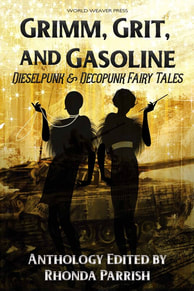 Guest Blog by Brian Trent "Steel Dragons of a Luminous Sky" moves the spotlight away from European theaters of war, and to the shores of 1930s China. In our dieselpunk re-imagining, this is the decade (as in our own timeline) that the Empire of Japan invades the Middle Kingdom. It's a side of the war that, oddly enough, hasn't gotten much attention in either Hollywood or literature. In my story, I sought to avoid the "good guys versus bad guys" trope, and instead depict the complex landscape of the time: China's internal strife, rival factions, outside aid in the form of America's Flying Tigers, and of course the Japanese invasion itself. Why dieselpunk? As a writer, the appeal partly owes to the subgenre feeling fresh and under-explored. It's no less fanciful or adventurous than its steampunk cousin, but there's more grit in the air. There's fuel-stains on canvas fatigues. There's grime on your aviator goggles. And in general, the stakes feel bigger, since humanity's penchant for war has entered a terrifying new phase and the machines (real and imagined) are heavier: steel juggernauts rumbling out of factories sporting riveted seams like rows of tribal scarification. The promised wonders of World Fairs are counterbalanced by battlefields festooned with barbed wire and corpses, trench warfare, and metal behemoths taking over land, sea, and air. Yet dieselpunk also offers an undeniable sense of fairy tale adventure, too, and within "Steel Dragons of a Luminous Sky" you'll encounter a lofty castle in the sky, a faithful steed, monsters in the countryside, rival kingdoms at war, and an epic quest to be fulfilled. Mortal men and women grapple with technological magic, as bullets pepper Chinese shores and robotic knights descend from heaven. Welcome to a world of daring risks and espionage, where the people have emerged, like their very machines, eager to survive and thrive. I hope you enjoy your visit. About the Author Brian Trent is the author of the sci-fi-novel Ten Thousand Thunders (published in 2018 by Flame Tree Press), and the Rahotep dark fantasy series. His contribution to Grimm, Grit and Gasoline is an original tale that explores dieselpunk in a deliberately non-western setting, mixing in fairy tale elements from ancient Chinese and Japanese traditions. His short fiction regularly appears in the world’s top markets, including Analog, Fantasy & Science Fiction, Orson Scott Card’s Intergalactic Medicine Show, Terraform, Daily Science Fiction, The Year’s Best Military and Adventure SF, Escape Pod, Pseudopod, Galaxy’s Edge, Nature, and more. A Writers of the Future winner and contributing author to Baen Books anthologies, Trent lives in a foggy mountaintop town in New England. His website is www.briantrent.com. 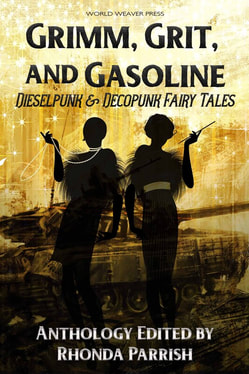 Guest Blog by Rhonda Parrish I’ve edited a lot of anthologies (over twenty at last count) and I adore each one of them for wildly different reasons. For example, Metastasis helped me through the death of my mother, Fae put me on people’s radars in a brand new way and Nevertheless checked off a Bucket List item. As it turns out, I love Grimm, Grit and Gasoline because of what it taught me about being scared but doing it anyway. Dieselpunk and decopunk have been around for a long time, but when I first proposed this anthology they were relatively new to me. That meant I didn’t know what I didn’t know. I am grateful that I was cognizant of that fact but along with that awareness came fear. Or, at least a high degree of intimidation. Being the newest kid on the block I didn’t want to come crashing into the genre, stomping on toes or pretending to have an expertise that I didn’t. But I was hungry to contribute to the field and this anthology idea was not going away, so I dove in. I read. I researched. I had a lot of conversations with myself about stepping out of comfort zones and personal growth. And I did it. It was the hardest Table of Contents I’d ever put together (I literally lost sleep over some of my decisions) but in the end it was worth it because I was exceptionally proud of the final manuscript that I turned in. Even so I was not expecting what happened next. Publishers Weekly gave us a starred review! Whaaaaat?! This book was the most intimidating one I’ve ever worked on, so that star felt sort of like the anthology editor equivalent of a medal for bravery. A reward above and beyond the personal satisfaction of a job well done. And now the book is out in the world, and I need to be brave in a whole new way. Because it’s not just in the hands of reviewers now, it’s in your hands. And, in the end, you are who I edit these anthologies for. But, while I’m a bit anxious, mostly I’m excited and proud to have Grimm, Grit and Gasoline out in the world, And I am oh, so thankful that I didn’t let my fear and intimidation keep me from working on this anthology. Because this book… oh, this book. I think you’re going to love this book. I certainly do. About the AnthologistRhonda Parrish is the editor of more than a dozen anthologies including, most recently, Fire: Demons, Dragons and Djinns and Tesseracts: Nevertheless. In addition, Rhonda’s written work has been in publications such as Tesseracts 17: Speculating Canada from Coast to Coast and Imaginarium: The Best Canadian Speculative Writing (2012 & 2015). Her YA Thriller, Hollow, is forthcoming (March 2020) and her website, updated regularly, is at http://www.rhondaparrish.com
Dieselpunk and decopunk are alternative history re-imaginings of (roughly) the WWI and WWII eras: tales with the grit of roaring bombers and rumbling tanks, of 'We Can Do It' and old time gangsters, or with the glamour of flappers and Hollywood starlets, smoky jazz and speakeasies. The stories in this volume add fairy tales to the mix, transporting classic tales to this rich historical setting. Featuring stories by Zannier Alejandra, Alicia K. Anderson, Jack Bates, Patrick Bollivar, Sara Cleto, Amanda C. Davis, Jennifer R. Donohue, Juliet Harper, Blake Jessop, A.A. Medina, Lizz Donnelly, Nellie Neves, Wendy Nikel, Brian Trent, Alena Van Arendonk, Laura VanArendonk Baugh, Sarah Van Goethem, and Robert E. Vardeman. GRIMM, GRIT, AND GASOLINE: Dieselpunk and Decopunk Fairy Tales is out in ebook and paperback today, September 3, 2019! See What Early Reviewers Are Saying:These unfailingly clever tales are impressive and page-turning, helping to correct the dearth of speculative fiction set in the interwar era. There is also a frequent and welcome spotlight on heroic women. Any reader who enjoys early-20th-century history or retold fairy tales will find these familiar but new, with well-played wonder in every story. These adaptations breathe fresh life into old tales, not only with dieselpunk settings, but also due to the diversity of the races, genders, and sexualities of the characters. This one-of-a-kind anthology of retold familiar fairy tales dressed up in fringe and smoke is a solid choice for large fantasy collections. Get lost in the industrial and gritty world of this dieselpunk fairyland, filled with planes and tanks, intense emotion, and plenty of high-stakes action. About the AnthologistRhonda Parrish is the editor of more than a dozen anthologies including, most recently, Fire: Demons, Dragons and Djinns and Tesseracts: Nevertheless. In addition, Rhonda’s written work has been in publications such as Tesseracts 17: Speculating Canada from Coast to Coast and Imaginarium: The Best Canadian Speculative Writing (2012 & 2015). Her YA Thriller, Hollow, is forthcoming (March 2020) and her website, updated regularly, is at http://www.rhondaparrish.com
|
World Weaver PressPublishing fantasy, paranormal, and science fiction. Archives
February 2024
|
- Home
-
Books
-
All Books
>
- Beyond the Glass Slipper
- Bite Somebody
- Bite Somebody Else
- Black Pearl Dreaming
- Cassandra Complex
- Causality Loop
- Clockwork, Curses, and Coal
- Continuum
- Corvidae
- Cursed: Wickedly Fun Stories
- Dream Eater
- Equus
- Fae
- Falling of the Moon
- Far Orbit
- Far Orbit Apogee
- Fractured Days
- Frozen Fairy Tales
- Glass and Gardens: Solarpunk Summers
- Glass and Gardens: Solarpunk Winters
- Grandmother Paradox
- Grimm, Grit, and Gasoline
- Haunted Housewives
- Heir to the Lamp
- He Sees You When He's Creepin': Tales of Krampus
- Into the Moonless Night
- Jack Jetstark's Intergalactic Freakshow
- King of Ash and Bones (ebook)
- Krampusnacht
- Last Dream of Her Mortal Soul
- Meddlers of Moonshine
- Mothers of Enchantment
- Mrs Claus
- Multispecies Cities
- Murder in the Generative Kitchen
- Recognize Fascism
- Scarecrow
- Sirens
- Shards of History
- Shattered Fates
- Skull and Pestle
- Solarpunk (Translation)
- Solarpunk Creatures
- Solomon's Bell
- SonofaWitch!
- Speculative Story Bites
- Trenchcoats, Towers, and Trolls
- Weredog Whisperer
- Wolves and Witches
- Anthologies and Collections
- Novels
- Novellas
- Fairy Tale
- Fantasy
- Romance
- Science Fiction
- Urban/Contemporary Fantasy
- Young Adult SFF
-
All Books
>
- Blog
- About
- Contact
- Press / Publicity
- Newsletter Signup
- Privacy Policy
- Store


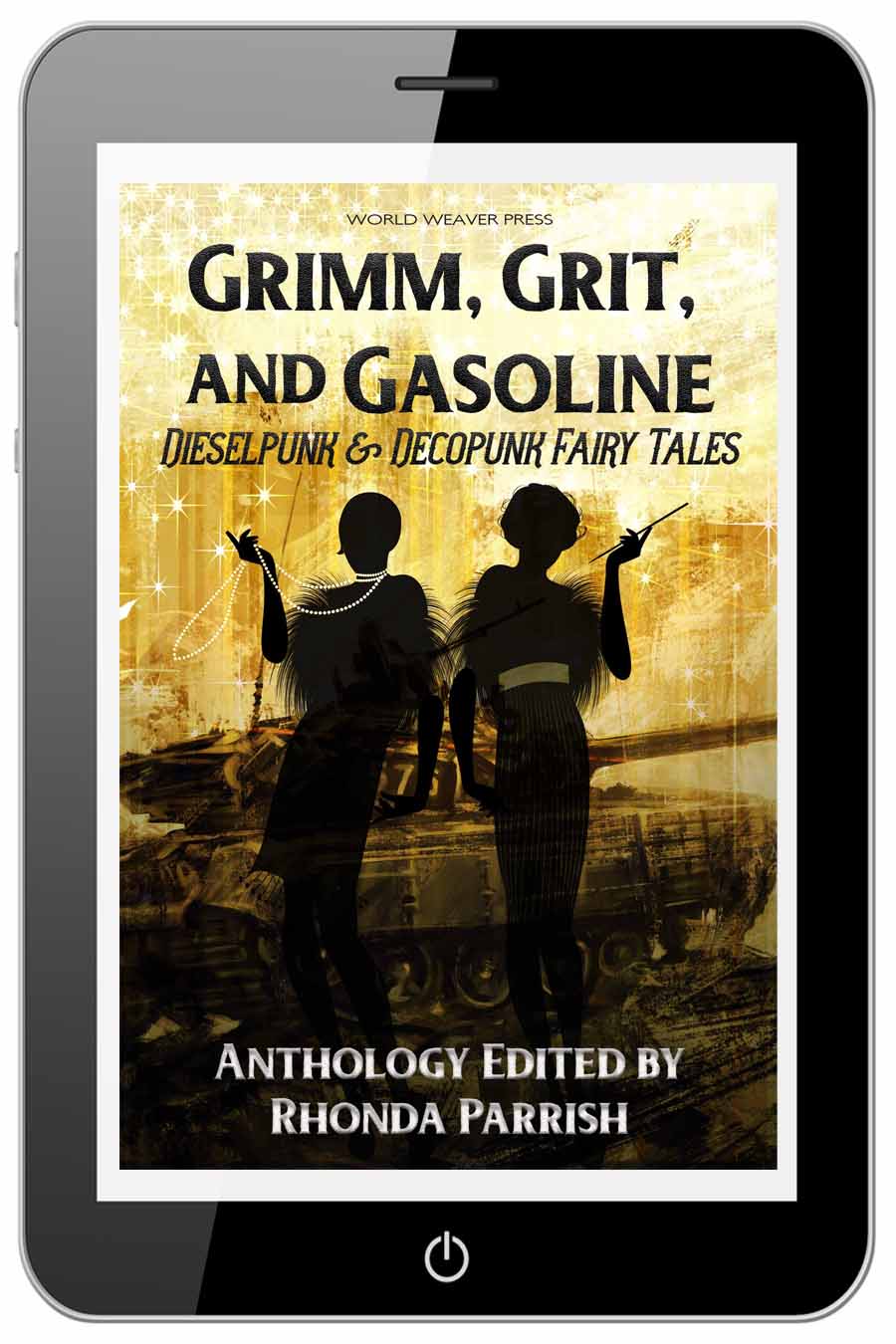

 RSS Feed
RSS Feed